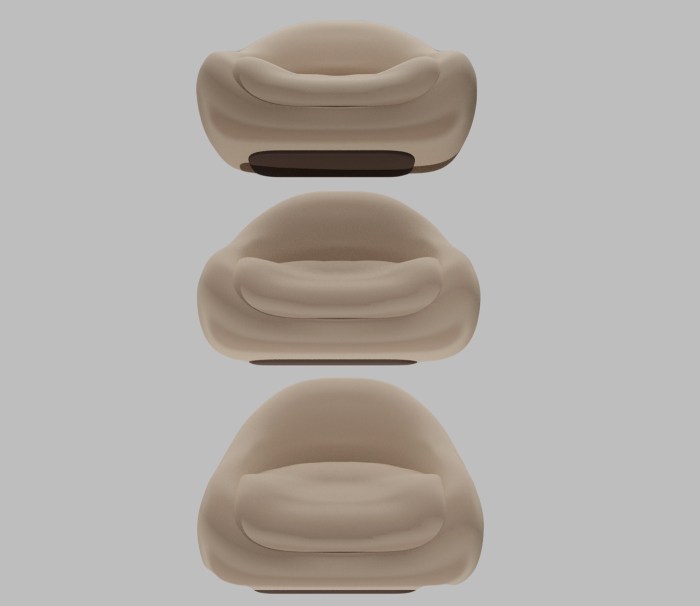
Minimalistic furniture trends bring a breath of fresh air to interior design, emphasizing simplicity and functionality without compromising on style. As we delve into this fascinating world, we discover how these designs not only enhance aesthetics but also promote a decluttered and serene living environment.
This exploration will cover the essential principles of minimalistic furniture, current trends shaping the industry, and the consumer preferences that drive these innovative designs. We’ll also touch on the significance of ethical practices, the impact of technology, and entrepreneurial opportunities within this niche market.
Minimalistic Furniture Design Principles
Minimalistic furniture design is all about simplicity and functionality. This approach emphasizes clean lines, uncluttered spaces, and a “less is more” philosophy that resonates well in today’s fast-paced world. The beauty of minimalism lies in its ability to create serene environments that promote calmness and focus.Key characteristics of minimalistic furniture design include the use of geometric shapes, neutral color palettes, and a deliberate selection of materials that enhance rather than distract.
Functionality is paramount in this design style, as each piece serves a purpose without unnecessary embellishments. Common materials found in minimalistic furniture include wood, metal, glass, and concrete, which together create a sleek and modern aesthetic.
Current Trends in Minimalistic Furniture
As we navigate through 2023, several exciting trends have emerged in the realm of minimalistic furniture. A notable trend is the use of sustainable materials, as consumers increasingly prioritize eco-friendliness in their purchasing decisions. This has led to a rise in furniture crafted from reclaimed wood and recycled metals.Color schemes that complement minimalistic furniture typically revolve around earthy tones, soft pastels, and monochromatic palettes.
These colors create a harmonious atmosphere that enhances the simplicity of the designs. Another significant trend is the integration of technology, where smart furniture pieces like adjustable desks and modular seating solutions play a crucial role in modern minimalistic homes.
Customer Preferences in Minimalistic Furniture
Consumer preferences have shifted significantly towards minimalistic furniture styles as individuals seek to declutter their living spaces. Many people are drawn to the clean and open aesthetics that minimalism offers, which often leads to a more organized lifestyle. Demographics most attracted to minimalistic designs often include young professionals and millennials who value functionality and style. Case studies of successful brands like Muji and IKEA illustrate how focusing on minimalism can lead to strong market performance.
These companies have effectively captured the essence of minimalism, appealing to a global audience seeking simplicity in their living environments.
The Impact of Minimalism on Space Management
Minimalistic furniture plays a crucial role in efficient space utilization. By choosing multifunctional pieces, such as sofas that convert into beds or coffee tables with hidden storage, homeowners can maximize their living areas.In small living spaces, it’s essential to incorporate minimalistic furniture that does not overwhelm the environment. Tips for achieving this balance include selecting lighter colors to create the illusion of more space and using mirrors to reflect light.
Ultimately, the goal is to maintain a clean aesthetic while ensuring practicality in decor choices.
The Role of Business Ethics in Furniture Manufacturing
Ethical sourcing of materials is increasingly important in the production of minimalistic furniture. Companies are now held to higher standards regarding their environmental impact and labor practices. Sustainability practices are vital in furniture manufacturing, as they ensure that the production process does not harm the planet. Companies like West Elm and IKEA exemplify strong ethical values by committing to sustainable sourcing and reducing waste in their operations.
Entrepreneurial Opportunities in Minimalistic Furniture
The minimalistic furniture market offers numerous entrepreneurial opportunities. Business models can vary from direct-to-consumer online shops to boutique showrooms that showcase a curated selection of minimalistic designs.Challenges in this niche market often include competition from established brands and finding the right target audience. However, success stories like Article and Burrow demonstrate how innovative marketing and a focus on customer experience can lead to substantial growth in the minimalistic furniture sector.
Customer Service Strategies in the Minimalistic Furniture Industry
In the minimalistic furniture industry, exceptional customer service is essential for building brand loyalty. Providing a seamless shopping experience—from easy navigation on websites to knowledgeable staff in showrooms—can significantly enhance customer satisfaction.Training staff to engage effectively with customers is crucial. Techniques such as personalized recommendations based on customer needs help in creating a memorable experience. Moreover, managing customer feedback through surveys or direct communication can aid in refining products and services, ensuring they meet customer expectations.
The Influence of Human Resources on Furniture Design
Human resources play a pivotal role in fostering creativity within furniture design teams. By cultivating an innovative culture, companies can encourage designers to experiment with new ideas and materials, essential for staying ahead in a competitive market.Recruitment strategies focused on attracting diverse talent can significantly benefit design-focused companies. Additionally, implementing employee retention programs that emphasize career growth and recognition can lead to higher satisfaction among design professionals.
Business Franchising in the Furniture Sector
Franchising presents a significant opportunity in the minimalistic furniture market, allowing entrepreneurs to leverage established brand recognition while providing unique furniture solutions. Best practices for establishing a furniture franchise include thorough market research and developing comprehensive training programs for franchisees. Key success factors for franchisees involve maintaining the brand’s integrity while adapting to local market preferences.
Industrial Mechanical Aspects of Furniture Production

The manufacturing processes involved in creating minimalistic furniture often utilize advanced technologies to enhance production efficiency. Innovations in machinery, such as automated cutting and assembly, allow for precision while minimizing waste.Comparing traditional methods with modern techniques reveals a shift towards more sustainable practices. While craftsmanship remains valued, the integration of automation helps meet the growing demand without compromising quality.
Ending Remarks
In conclusion, the minimalistic furniture trends are more than just a design choice—they reflect a lifestyle that values simplicity, sustainability, and efficiency. As we embrace these elements, we move towards creating spaces that are not only beautiful but also functional and mindful of our environment.
FAQ Guide
What are the core principles of minimalistic furniture design?
The core principles include simplicity, functionality, and a focus on essential elements without excess decoration.
How can I incorporate minimalistic furniture in a small space?
Choose multifunctional furniture, utilize vertical space, and maintain a neutral color palette to create an airy feel.
What materials are commonly used in minimalistic furniture?
Common materials include wood, metal, glass, and natural fibers, emphasizing quality and durability.
Are there specific color schemes that work best with minimalistic designs?
Light neutrals, monochromatic palettes, and muted tones often complement minimalistic designs, creating a calm atmosphere.
How does technology influence modern minimalistic furniture?
Technology enhances functionality through smart furniture solutions, adding convenience while maintaining a clean aesthetic.





